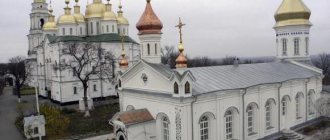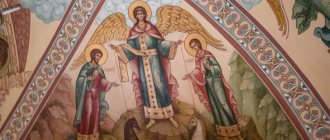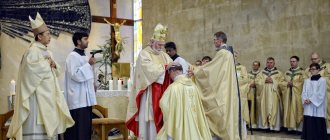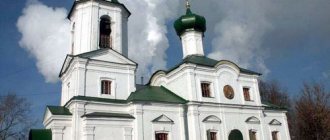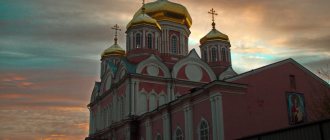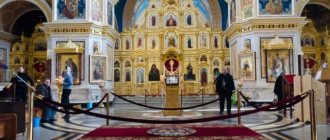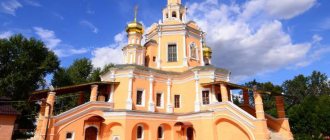Restoration of the Jerusalem Temple
The first Jerusalem temple stood for a little more than three and a half centuries. The Temple Mount was littered with its debris for several decades. In 538 BC. e., shortly after the Persian conquest of Babylonia, Cyrus the Great issued a decree allowing the Jews to return to their homeland. He also allowed the restoration of the Jerusalem Temple, their main shrine, to begin. By order of the king, all sacred relics confiscated by Nebuchadnezzar II were returned to the temple. The restoration of the shrine was led by Zerubbabel, a descendant of King David. The Second Temple of Jerusalem is often named after him.
Construction began in the second year after the return of the Jews from Babylon. The book of Ezra describes the restoration of the temple. The foundation was laid in a solemn atmosphere: music was played and psalms of praise were sung. But the sight of the destroyed temple was reminiscent of the greatness of Solomon’s shrine. “And the people could not distinguish the cries of joy from the cries of sobbing and crying.” True, riots soon began in Jerusalem: the Samaritans were forbidden to take part in the construction, and they tried to prevent the Jews from rebuilding the temple. Only 15 years later it was possible to start work again. The temple was completed in 516 BC. e., 70 years after the destruction of the first.
It is difficult to say what Zerubbabel’s temple looked like - almost no evidence of its appearance has survived. It can be assumed that it was inferior to the First Temple in luxury and grandeur. The main shrine of the Temple of Solomon - the Ark of the Covenant - was no longer there.
But it was built on the basis of drawings of Solomon's temple and vague assumptions that could be extracted from the prophecies of Ezekiel. According to the descriptions in the book of Ezra, the Second Temple was still larger than the one built under Solomon.
View of the Temple Mount. Source: pinterest.com
Temple of Herod (20 BC - 70 AD)[edit]
Model of Herod's Temple.
Construction of Herod's Temple[edit]
In the 18th year of his reign (20 BC), King Herod decided to radically rebuild the Temple. In order not to cause popular anger and unrest, Herod prepared in advance all the materials necessary for construction and about a thousand carts for transporting the stone. A thousand priests were trained in building skills so that they could carry out all the necessary work in the interior of the Temple, where only priests were allowed to enter. The Mishnah reports that the construction was carried out in careful compliance with all the requirements of Halacha. All necessary measures were also taken to ensure that construction did not interfere with the regular worship of the temple.
By the time, according to the Gospels, Jesus preached in the Temple, construction had already been going on for 46 years[44]. The reconstruction of the Temple, begun by Herod, was finally completed only under Agrippa II, in the year AD. e.
Architecture of Herod's Temple[edit]
Herod's Temple was a building in the Hellenistic style, which, however, retained in its plan and general forms the features of Solomon's Temple. Mainly white stone was used in its construction, the gates and many of the decorations were decorated with silver and gold[45]. The Talmud states that “he who has not seen Herod’s Temple has never seen a beautiful building in his life.”[46]
First of all, Herod doubled the area of the Temple Mount (144 thousand m2). For this purpose, a powerful retaining wall was built around the mountain (of stones weighing up to 100 tons; wall height - 38 m, perimeter - 1550 m), and the space between it and the Temple Mount was filled with earth. Two bridges led to the eastern wall of the Temple Mount. The Mishnah reports that there were five gates leading to the Temple Mount - two on the south side, and one gate on the other three sides; however, excavations revealed the presence of another gate on the west side, and according to Josephus, four gates led to the Temple from the west. Outside the wall—at least its southwestern part—adjoined an area consisting of several levels connected by steps; Under the lowest levels of this area, premises were made for merchants' shops.
Inside the wall there was a square surrounded by covered colonnades ( rahavat ha-bait
), where access was open to everyone, including non-Jews.
At the top of the Temple Mount, Herod cleared a vast space (250x250 m) of extraneous buildings, which was separated by a fence of carved stone ( soreg
) from the rest of the Temple Mount.
It had signs in Greek and Latin warning that non-Jews were forbidden to enter the sacred area on pain of death.[47] Behind this enclosure were 14 steps that led to a 5 m wide mound ( Hel
) adjacent to the wall of the temple courtyard (
Azarah
).
Temple Court[edit]
In the eastern part of the temple courtyard there was a square (about 67x67 m) “women’s courtyard” ( Ezrat our
), surrounded by a balcony. In each of its four corners there were square chapels (20x20 m): for the Nazarenes - in the southeast corner, for lepers - in the northwest corner, for storing oil - in the southwest corner, and for firewood in the northeast corner. There were gates in each of the four walls of the “women’s courtyard”.
From the “women’s courtyard” they rose to the “courtyard of Israel” ( Ezrat Israel
), open to every Jew.
The "court of Israel" was actually part of the "court of the priests" ( Ezrat ha-kohanim
). Both courtyards were surrounded by a 20 m high wall, on which trophies captured from the enemy by the Hasmoneans and Herod were displayed. The “Courtyard of Israel” was long and narrow (67x5.5 m).
The “court of the priests” (about 94x68 m) was approximately 1.5 m higher than the “court of Israel” and was separated from it by large hewn stones. Most of the sacrifices took place here, and there was a large square (about 16x16 m) Altar of Burnt Offerings, 8 m high; at each of its corners there was a "horn". In the southwestern corner of the altar there were two holes for draining the blood of sacrificial animals. This blood flowed into a pipe that led to the Kidron River. Near this corner there were also two bowls where libations of wine and water were poured out. They ascended to the altar along a rise adjacent to its southern side.
Between the altar and the facade of the Temple there was a copper vessel with 12 taps for washing the hands and feet of the priests. Seven or eight gates led into the courtyard of the priests, between which (and partly above which) there were service rooms where incense was made ( Beit Avtinas
), the bath for washing the high priest on Yom Kippur (
Beit ha-tvila
), the rooms in which the showbread was prepared, the Sanhedrin met, etc.
Temple building[edit]
The Temple building was “shaped like a lion—narrow at the back and wide at the front.”[48] The height of the Temple was increased by Herod by 20 m, and its width by 15 m. The facade of the building was updated and had a square shape - 50x50 m. The back of the building was the same height, but only 35 m wide. The facade was decorated with four columns of the Corinthian order. The building had a flat roof. The entrance gate (20 m high and 10 m wide) was open, and through it a large curtain ( masach)
).
Porch ( Ulam
) was narrow (5.5 m).
From its ceiling hung golden crowns ( atarot
) and chains, which young priests climbed to clean the crowns.
From the Narthex, the “Great Gate” (5 m wide and 10 m high) led to Heichal
(20x10 m), where there was an altar for burning incense, a table for showbread and a Menorah.
On the sides of Heikhal
there were 38 rooms located on three floors.
In the depths of Heikhal
there was the Holy of Holies (
Dvir
) (10x10 m), separated from
Heikhal
by a double curtain (
parohet
).
Dvir
was completely empty, and only once a year - on Yom Kippur - did the high priest enter there to burn incense.
Defilement by the Gentiles and Purification by Judas
The Temple of Zerubbabel had to go through difficult times. When the Greeks seized power in Judea, the temple servants, nevertheless, enjoyed the respect of the Hellenes and accepted rich gifts. True, at times the rulers allowed themselves to dip their hands into the temple’s reserves when the treasury was depleted. King Antiochus IV Epiphanes played an important role in the formation of Jewish traditions. In the 2nd century BC. e. he first plundered the temple, and a couple of years later he completely desecrated it.
On the Altar of Burnt Offering he installed an altar of Olympian Zeus. Only with the arrival of Judas Maccabee was the temple cleansed of defilement. It is in honor of this event that Hanukkah is celebrated. It is believed that on the day Judas dedicated the temple, a miracle occurred. To light the menorah for consecration, Judas needed pure oil, which was only enough for one day. But miraculously, the menorah burned for eight days, just long enough to make new oil.
Temple Mount: location of the Jewish Temples.
The Temple Mount in the Old City of Jerusalem today occupies an area of approximately 45 acres. It is surrounded by a trapezoidal wall: the south wall is about 910 feet long, the north wall is about 1025 feet, the east wall is about 1520 feet, and the west wall is about 1580 feet long. The average height of the site above sea level is about 2400 feet. Most of the buildings and ground structures are Muslim - to date, no visible traces of the First or Second Temples can be found on the site. The territory is developed like a park - trees and shrubs are planted, many ancient buildings and monuments that arose over the last 1300 years of Muslim control over this place.
Today, the Temple Mount site is topographically located just below the top of the ridge system known as Mount Moriah. At the end of his reign, David acquired this place from a Jebusite named Aravna (Orna). King David developed this area in order to build a permanent “House of God” there to replace the Tabernacle of Moses, which followed with the Jews after the Exodus from Egypt to the Promised Land. David had plans drawn up to build a Tabernacle twice the size, and he prepared large quantities of building materials: stone, cedar, and much gold and silver. However, only Solomon, his son, actually built the First Temple (1 Chronicles 22:14-15, 28:11-20).
The hill system where the Temple Mount now sits is recognized by many credible sources as the site where Abraham was told to sacrifice Isaac (Genesis 22:1-2). Since Solomon built the First Temple about 3,000 years ago, Abraham was on Mount Moriah about a thousand years earlier.
Destruction and restoration by Herod
The Temple of Zerubbabel was destroyed during the capture of Jerusalem by Herod. But the new king decided to restore the shrine. The work lasted almost 10 years; the finishing of some parts of the temple continued even after the death of Herod. The Gospel of John states that it was in this temple that Jesus Christ himself preached. Only in the 60s AD. e. the building was finally completed. But the main shrine of the Jews was not destined to stand for long - literally a couple of years later the temple was finally destroyed by the Romans.
Model-reconstruction of the Temple of Herod. (wikipedia.org)
Descriptions of Herod's temple can be found in several sources. In addition to the New Testament, references to the restored building on the Temple Mount are found in the treatise of the Mishnah (the first written source that contains the most important provisions of Orthodox Judaism), in the texts of the Talmud and in the works of Josephus.
Josephus writes: “The appearance of the temple represented everything that could delight the eye and soul. Covered on all sides with heavy gold sheets, it shone in the morning sun with a bright fiery shine, dazzling to the eyes, like the rays of the sun. To strangers who came to worship in Jerusalem, from a distance it seemed covered with snow, for where it was not gilded, it was dazzlingly white.” Herod enlarged the area of the Temple Mount. Walls were erected along the perimeter. The famous Western Wall, where thousands of pilgrims flock every year, is only a small part of the western wall.
Wall of Tears. Source: pinterest.com
Three main tragedies of 9 Ava (Boris Grisenko)
Telegram channel @ieshua.org
The first tragedy of the 9th of Av, which occurred according to the ancient tradition of the 9th of Av: 12 spies returned, and 10 of them upset the people, sowed disbelief, doubts and said that “we have nowhere to go to that land, because there are terrible giants who can kill us "
Famous story. Two Yeshua Ben Nun (Joshua) and Caleb, they said: “Good people! There are plenty of men there with little hands, but we have God, which they don’t have! They have idols and demons, but we have the Almighty of Israel! Don't be afraid of brutes or giants, don't be afraid of anyone! We may be grasshoppers in our eyes, but in their eyes God will make us conquerors!”
The people listened and chose. You remember, all of Israel tensed up and made a choice. What choice did Israel make, remember? They voted: ten to two, and all the people believed the majority. In particular, this is why in Deuteronomy, through Moses, God gave the commandment: “Do not follow the majority to evil.”
If the majority leads you to sin, the majority leads you in a bad direction, the majority leads you away from the Word of God, the majority leads you into the bag - no majority should be an excuse for you to make an ungodly choice. Amen?
They made this ungodly choice, as a result of which instead of 40 days the people wandered in the desert for 40 years. And during this time, the entire adult generation that came out of Egypt died out, which was a terrible punishment for the fact that they believed the majority, and not God's minority. According to tradition, this happened on the 9th of Av - this was the first tragedy of the 9th of Av.
But the two most important tragedies of the 9th of Av occurred when, as we have already said, the Babylonians set fire to and destroyed the First Solomon's Temple in Jerusalem.
The second terrible tragedy took place at about the same time. But in fact, I want to tell you, according to Josephus, it was not exactly the 9th of Av. Not exactly the 9th of Av, but around this day, in the year 68 of the 1st century AD, the Second Temple of God in Jerusalem burned and was destroyed. This destruction was final, final, final, final!
Very interesting!
What when the tanai is the spiritual authority in Israel of that time, the 1st century, the 2nd century (these are mainly those from whose sayings the Talmud, its main part, was compiled), when the tanai and subsequent authorities of Judaism spoke about the tragedies of the 9th of Av , they somehow talked more about the tragedy of the First Temple. Although the dispersion after the first tragedy lasted 70 years; 70 years later, the restoration of the Temple began. And the dispersion after the second tragedy continues to this day. Although the State of Israel has been restored, there is still no Temple.
It is very interesting that until now, if you read various Midrashim, Talmudic interpretations, the main emphasis will be on the destruction of the First Temple. Although the rabbis themselves admit that the tragedy of the Second Temple is worse. But it's logical.
What is this connected with?
This is because the tragedy of the First Temple was predicted by many prophets hundreds of years ago and explained by God's servants hundreds of years and decades and years before this disaster. God warned His people in different ways, God explained in detail why this would happen if the people did not perform teshuva (repent), and even described approximately how this would happen. In fact, unfortunately, there was nothing unexpected. Israel simply listened and did not hear, saw signs and did not want to notice them.
We can read the books of many prophets and we will be amazed at how very clearly God predicted, explained, warned, cautioned, and Israel did not listen. In short, there are no problems with explaining this tragedy. But regarding the catastrophe of the Second Temple, there are problems in modern Judaism, and they have been there since the beginning of modern Judaism.
Because modern Judaism is unbiblical Judaism. This is the Judaism that arose after the destruction of the Second Temple, and it is entirely adapted to unusual conditions.
Signs of God indicating the destruction of the First Temple.
So, in fact, God gave a whole series of signs, too, starting from a time somewhere over 50 years before the destruction of the Second Temple. Every year before this, the red rope that was wound around the horns of the scapegoat on Yom Kippur changed its color to white because God accepted the sacrifice of the high priest for himself, for his house and for all Israel. And around the time of Yeshua’s ministry, a little earlier and during His ministry, something unusual began - in one year the sacrifice was accepted, in another it was rejected by God.
There were also other signs associated with the lots - supernatural miraculous signs that showed that the sacrifice was accepted for the people. But about forty years before, and they often even say (they calculate and it turns out that this is the year when the earthly ministry of Moshiach ended), for forty years the signs of God’s redemption disappeared altogether. From that moment on, this red rope stopped changing color, the veil on the Holy of Holies stopped changing color (as it happened every Yom Kippur), the lot stopped falling into atonement, and the lot began to fall into condemnation.
And this is what happened in the year of the crucifixion of the Messiah and His resurrection from the dead, according to the testimony of the Talmud and other ancient sources: huge doors closing the entrance to the sanctuary (not to the holy of holies, but to the sanctuary), in earlier times it was necessary to close and open 20 healthy men - they opened by themselves (this was impossible), and after that no one could close them for some time.
Another very important sign. The lamp - the menorah, which burned unquenchably, shone in the sanctuary, went out by itself. God showed that His shekinah - the holy presence - left the Temple, as it is written in the Gospels.
Another great sign also happened. The curtain that separated the Holy of Holies from the sanctuary was torn from top to bottom at the moment of the Lord's death on the Cross of Calvary. But only the Gospels talk about this, the Talmud is silent. Naturally, the Talmud gives other signs besides this, because the Gospels talk about this, and the Talmud began to be written down only at the end of the 2nd century. We must understand that the Talmud was compiled to a certain extent in opposition to the Gospel. The foundations of modern rabbinic Judaism, they were built in opposition to the Lord Messiah, His believing Messianic Jews and in opposition to the Gospel. But even what is written there fully confirms the Gospel texts.
So, the signs were very strong, very serious, very formidable. The Talmud also says that incredible signs were seen over Jerusalem: a kind of angelic army rushed in front of everyone, so that thousands of people saw this formidable angelic army over Jerusalem! God opened the spiritual world and showed it to the inhabitants of the city. It is written that ordinary Jews decided that this was a good sign, but the wise men knew that it was bad.
A simple Jew appeared, a simple man who was unlearned, and he proclaimed: “A voice from the east, a voice from the west, a voice sounds from all sides - woe to this city, woe to Zion, woe to Israel!” They wanted to kill him, but the Romans protected him, and he died during the siege. And there were other signs.
Friends! It is said in the Talmud and Midrash that
...all the common people still believed that this was a good sign. And only the wise knew that God was warning of great punishment.”
God gave explanations for the tragedy not to the sages, but to the followers of Yeshua.
But none of the sages of Israel understood the reason. They understood that a great catastrophe was coming, but they did not understand the reason. Do you know why? Because God did not give them a prophetic word, and the reason for this is written in the Gospels.
The revealed Lord Messiah handed over the keys of spiritual power in Israel, took them from the Sadducees, Pharisees, priests and high priest, and handed them over to the Apostles and the leadership of the Jewish Messianic Community, and prophecies were given to them. And the first who gave great prophecies is the Lord Himself.
In Matthew 24 we read that He warns and details what will happen (what will happen!) because of the disobedience of God's people; what will happen because God's people rejected God's visitation; because he continued to persist; what will happen because the leaders of Israel chose lies instead of truth, and the people submitted to them.
So, in fact, clear explanations, clear prophecies, descriptions of how it will be, were given by the Lord not to the wise men of Israel who held on to their own, but to God's new servants, and first of all, through the Son of God, Yeshua ha'Mashiach. Therefore, subsequent leaders of Israel found themselves in a very difficult situation. God did not give any explanations to any of them in advance, none of them had clear prophecies, for they only understood that a catastrophe was coming and hid it from God's people as much as possible. And still (still!), you can imagine (!), almost two thousand years later, there is no unity in understanding why the catastrophe with the Second Temple occurred.
Explanations from the Haggadah of the reasons for the destruction of the Second Temple.
I will read to you only some authoritative explanations of the great sages of Israel, I will read only some authoritative explanations from the special collection “Haggadah”. So,
“Why was the First Temple destroyed? Because idolatry, incest and bloodshed were committed under him. But why was the Second Temple destroyed if everyone studied the Torah, kept the commandments and did good deeds? Because among people there was unreasonable hatred towards each other. This teaches us that hatred is equal to three other crimes: idolatry, incest and bloodshed.”
Please tell me, friends, what do you think, when the Jews killed each other before the destruction of the First Temple, did they do it without hatred, with such, you know, a gentle attitude? They flooded Jerusalem with the blood of their brothers and sisters, but they did it, you know, with such regret: “It’s a pity that you have to kill brothers... I don’t know, somehow I feel sorry for them... But I’ll kill them anyway, then I’ll regret it...”
The senselessness of such an explanation occurred to the sages of Israel themselves. And then they tried to explain: “Wasn’t there causeless hatred during the time of the First Temple?”
Rabbi Eliezer said... Here is a very strange passage from the prophet Ezekiel , which says nothing about it, although there are absolutely clear places in the Torah, in Scripture, in the prophets, where it was said about the godless attitude of the Jews towards each other, because which the First Temple was destroyed by the Babylonians. This passage speaks only of the princes of Israel, although in fact it speaks not only of the princes, but of the whole people.
They tried to explain: “Only the princes of Israel hated each other, but the whole people participated in the murder without hatred.”
This is written in the Talmudic treatise Yoma.
Next explanation. I'll just read a few to you. So, Rabbi Yochanan said: “Jerusalem was destroyed only because judicial decisions were made only according to the law of the Torah.”
Do you hear, friends? Jerusalem was destroyed only because the judgments were made according to Torah law. The rabbi asks the question: “What else could they have followed, lawlessness or what? But it happened that the judges based their decisions on the laws of the Torah, but did not go beyond the formal requirements of the law.”
Reasonable reasons, right? It is bad when formal religiosity replaces a real relationship with God.
But compare: the previous Rabbi Eliezer said that Jerusalem and the Temple were destroyed due to causeless hatred. And here it says: only because the court decisions were only according to the law, according to the letter of the law.
We are still reading. Rabbi Yochanan ben Zakai said: “For three sins, the wealthy citizens were handed over to the Romans...
In other words, he explains why even the rich inhabitants of Jerusalem were not spared when the city was destroyed along with the Temple.
… because they were engaged in usury and took interest on a loan that had already been repaid.”
Do you hear, friends? Because they engaged in usury and took interest on a loan that had already been repaid. A very interesting idea!
“Because in public they promised to give money to charity, but did not do it.”
Also listen to this reason: because in public they promised to give money to charity (they promised to give money to charity in front of all the people), but in fact they did not do it.
“Because they removed the burden of conscription from themselves and placed it, along with taxes, on the poor.”
Listen! But these are serious sins against God and against the Torah! And in other explanations we read that everyone fulfilled the commandments of the Torah. Strange, isn't it?
Another Rabbi Yochanan , this time ben Tortan , said:
“Why was the First Temple destroyed? Because of idolatry, adultery and the shedding of innocent blood.”
Notice! There is no controversy about the reasons for the destruction of the First Temple. All the sages of Israel say the same thing. The controversy begins when they talk about the Second Temple. But during the time of the Second Temple, all the commandments of the Torah were fulfilled, and even tithes were collected. Why was it destroyed? Because people loved money and hated each other.
A new sin appears: the love of money, despite the fact that tithes were given. Is it really interesting, friends? Okay, I'll read a little more and we'll move on. I won’t read all the explanations that I have selected here, although they are all very interesting.
So, Rabbi Yehuda said: “Jerusalem was destroyed only because the sages there were despised.”
Notice that almost every one of them gives their own reason and says: “Only because of this was Jerusalem destroyed.” So they all contradict each other. Read on.
Rabbi Jonathan said: “Why was Shiloh destroyed?...
This is the sanctuary of Shiloh, the usual pronunciation in the Synodal translation of Shiloh (1 Book of Samuel)
...Because they did not honor the sacred sacrifices...
Remember what the sons of Eli did?
...Why was the First Temple destroyed? Because of idolatry, adultery and the shedding of innocent blood,” as if everyone was saying the same thing about the First Temple.
“What happened to the Second Temple? We know that people studied the Torah and tried to observe all its commandments. Why were they expelled from their land? Because they loved money, they hated each other. And this means that hatred exceeds the sin of idolatry,” and so on. Again, the sin of idolatry, but for some reason the love of money…. I see... The love of money is a little forgivable.
There are also different explanations. Other great rabbis say that Jerusalem was destroyed only because children were not educated there. But this is not true. About 50-60 years before the destruction of the Temple, compulsory education for boys was first introduced in Jerusalem, and it continued almost until the destruction of the Temple. Never before has there been compulsory education in special schools. But nevertheless, it was necessary to come up with something?
Others say: “Because they did not keep the Shabbat.” But how could they not observe Shabbat if everyone is united in fulfilling all the commandments of the Torah? And Shabbat is one of the main commandments of the Torah. Really, friends?
There are various painful attempts to explain contradictory ones. What does this mean? This suggests that neither immediately after the destruction of the Temple, nor before the destruction of the Temple, nor until now the leaders of alternative Judaism (and we can say that all Judaism, which one way or another originated from the Pharisees and went through various stages of change, and came to those forms that exist now - Orthodox, Conservative, Reform, their various movements), all this Judaism, it is alternative to biblical Judaism, that is, it contradicts biblical Judaism, it is not the same as biblical Judaism. All this Judaism did not have a revelation and does not have a revelation about the true reasons for the destruction of the Second Temple.
Yeshua rebukes the ancient Israelite sages
Yeshua’s denunciation of these same sages comes to mind “You strain out a gnat and swallow a camel.”
Why did he say this? Because they placed excessive emphasis on various ritualistic minor commandments. The ritual obscured for them the main thing in God's law: love, righteousness and faith. And they were shielded, closed, protected by scrupulous observance of the secondary and tertiary commandments at a time when the main ones were violated. We see the same thing in considering the reasons for the destruction of the Second Temple.
They describe many real defeats of Israel, many real sins of Israel. True, they contradict themselves when they say that they keep all the commandments. They describe the love of money; they describe legalism, following the letter of the law without revealing more; they describe usury; they describe the oppression of the poor; they describe vanity, charity for show. Yeshua speaks about this in the Sermon on the Mount. But these are all consequences, and they cover up the true causes.
Very important! The essence of the problem and the root cause of the tragedy
And the crux of the problem is that the leaders of Israel rejected their Lord. Out of jealousy, out of envy, out of fear of losing their positions, they rejected the true King and chose an earthly king. Remember, “we have no other king except the Emperor of Rome”?
They rejected the Savior and lost salvation.
God gave 40 years after this for repentance. Thousands and tens of thousands of Jews repented. But, unfortunately, this was a clear minority. The majority of the people deliberately chose to follow their corrupt leaders who abandoned the Word of God. This is the root cause, this is the true spiritual “camel” that they tried to obscure with morality.
Donate Last: 07/05. Thank you!
Subscribe: Telegram • Facebook • • • Twitter • Instagram • Youtube
More on the topic:
- 9 Ava. Events, facts, comments
- Boris Grisenko: What did God promise Israel?
- Four Amazing Facts About the Personality of the Messiah
- Why is Jerusalem still important today?
Fall of the Temple
The end of the long history of the temple came with the outbreak of the First Jewish War, which led to the destruction of Jerusalem. In 70, Titus Flavius Vespasian began a siege of the city. Over several months of siege and bloody battles, more than a million people died.
Francesco Hayez. "Destruction of the Temple of Jerusalem." (wikipedia.org)
As Josephus writes, the future emperor did not intend to set fire to the temple, but the Roman soldiers disobeyed. The temple burned for 10 days. Interestingly, it was destroyed on the same day that the Babylonian troops burned the First Temple of Jerusalem.
Footnotes and sources[edit]
- Ezra 1:2,3; II Chron. 36:23
- Ezra 6:3-5
- Ezra 1:7-11; 5:14,15; 6:5
- Ezra 6:4, 8
- Ezra 3:7
- Ezra 3:1-6
- Jer. 33:10-11
- Ezra 3:8
- Ezra 3:12
- Hag. 1:15
- Ezra 15-22
- Against Apion, 1:22
- Talmud, Yoma 16a; commentary "Tifereth Israel"
- Mishna, Kelim I, 8
- Talmud, Psakhim 13b
- I Macc. 4:38, 48
- Josephus, Antiquities of the Jews XI, 4:7; XVI, 16:2
- Not X. 3:31
- Not X. 12:39
- Talmud, Sukkah 51b
- I Macc. 4:44 onwards
- Ben Sira 50:3
- I Macc. 11:25
- Mishna, Tamid, 1
- Mishna, Tamid I, 3
- Talmud, Yoma 10a
- Ezra 6:3
- Ezra 6:4
- Wed I Sam. 6:36
- I Macc. 1:21; 4:38 onwards
- I Macc. 1:22; 4:51
- Wed Josephus, Antiquities of the Jews V, 5:5; Talmud, Yoma 52b
- which was formerly voluntary (Num. 18:21)
- Small 3:8-10
- Josephus, Antiquities of the Jews XII, 140-142
- II Macc. 3:3
- I Macc. 1:21ff; 1:46ff; 4:38
- I Book of Maccabees 4:36 ff.
- I Macc. 4:49-50
- I Macc. 4:60; 6:7
- Josephus, Antiquities of the Jews XIII, 217
- Josephus, "War of the Jews" I, 152
- Josephus, Antiquities of the Jews XIV, 105
- John 2:20
- Josephus, "War of the Jews" V, 223
- Talmud, Baba Batra 4a
- Two such tablets in Greek - one completely intact, the other partially preserved - were discovered in Jerusalem in 1870 and 1936, respectively.
- Mishna, Middot 4:7
Temple of Solomon
When we talk about the feast of the Entry of the Most Holy Theotokos into the temple, then by the temple itself into which she entered we mean its second, reconstructed version.
Icon. Novgorod. XIV century
The first temple of Solomon appears in the 10th century BC, in the era when Israel reached the pinnacle of its political and economic glory. It is known that Solomon’s father, King David, prepared everything necessary for this grandiose construction, but it was his son who built it. Why? According to the Old Testament, David participated in many bloody wars, so the Lord did not allow him to fulfill such an important spiritual mission.
The indirect evidence that we now have indicates that the first temple was a majestic structure. Exactly what it looked like is unknown, but most modern researchers believe that this building was typical of those temples that already existed on the territory of what was then and is now Lebanon. According to the Bible, it was in this region that craftsmen were hired to build.
Now there are reconstructions of its intended appearance and, apparently, the building was significant in size and area. The temple was located at the highest point of the city - on the so-called Temple Mount.
Northern hypothesis
Dr. Asher Kaufman's research, based on numerous topological and archaeological analyzes over the past twenty years, has resulted in a strong hypothesis about a site 330 feet north of the Dome of the Rock.
As is well known, the base of Mount Moriah surfaces inside the Dome of the Rock. Although the rise of the rock ends abruptly south towards the City of David, it is level just below the paving stones for more than 100 meters north of the Dome of the Rock Mosque. One particular level emerging from this rock is under a small Muslim place of worship called the Dome of the Tablets, or the Dome of the Spirits to the Arabs. Both names suggest a connection with the Jewish Temples. Under this small, featureless awning, supported by columns, is, according to Dr. Kaufman, the site of the Temple. (2)
| Northern location of the Temples |
